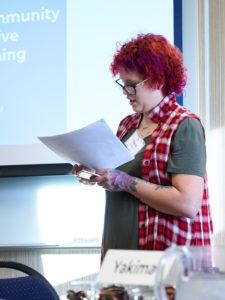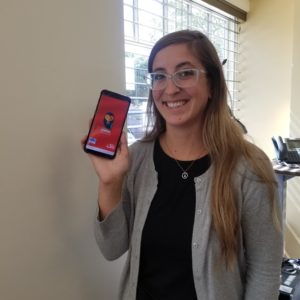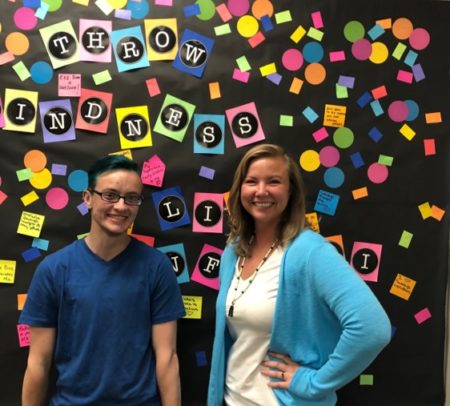Youth partnership is critical to ending youth and young adult homelessness, and it is one of our core values at A Way Home Washington. Sierra Phillips is one of our youth partnership consultants, and she shares how she has seen this work make an impact on youth and young adult engagement.
Adultism training. Being unafraid to fail. A high level of community participation. Funding for diversion programs. Accountability. These are a few of the things our Anchor Communities, Pierce, Walla Walla, Yakima, and Spokane, were proud of during the recent annual convening. And I am proud of working with an organization that consistently incorporates these values into the work we do.

I’ve been working as a consultant with A Way Home Washington for the past 8 months, and I’ve been helping the Anchor Community Initiative team make sure that youth and young adults are centered in activities like the annual convening. In preparation for the event, I was able to sit down with the team that works on the initiative every day, and with members of the local teams like Carla, an amazing young person from Walla Walla. Through this preparation, I gained the contextual knowledge I needed to make sure my recommendations helped the team come closer to their goal of centering young people in all activities.
The annual convening was a lot of fun. On the day of the event, I got the chance to connect with and meet some rad people, including the young people who are part of each community’s team. I learned what each community was doing and how their goals would impact their future work. And because we were intentional about creating a space where young people’s voices are heard, I believe this event helped each community better understand why youth and young adult engagement is so important in this work.
I am encouraged to see that youth and young adult engagement is central to A Way Home Washington’s work, and that I continue to be consulted for my expertise on this topic. Over the past months, I’ve been called in to assist with interview panels for staff hiring at A Way Home Washington and work planning sessions for the Anchor Community Initiative.
I hope my future includes more of this work. It is because of A Way Home Washington and other similar agencies that I believe I am more than my story. I don’t have to sit on a stage and be paraded around as “the homeless person.” I am strong, I am capable, and I can do whatever I set my mind too. My future hopes and dreams today are much bigger than they previously were. I feel empowered with the knowledge that I do have a voice that matters in this work and I want other young people to feel that way as well.






